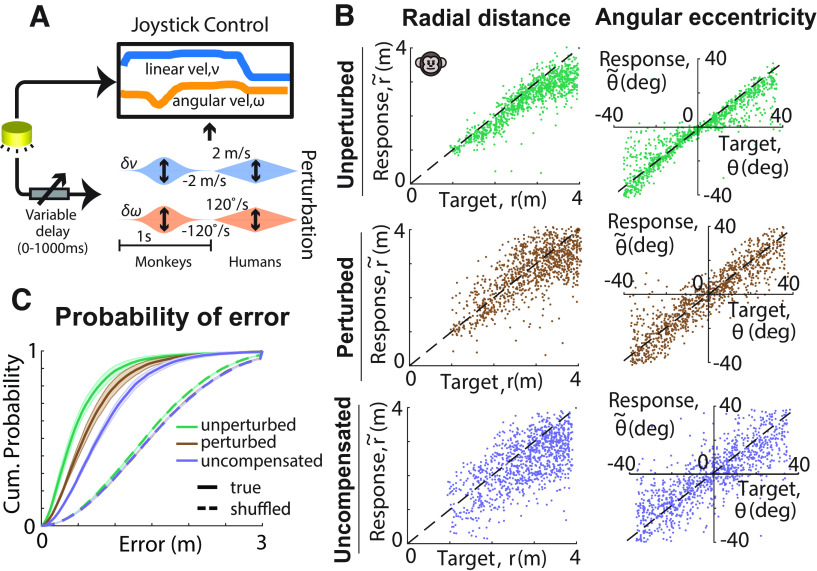Figure 2.
Unpredicted perturbations of optic flow challenge subjects to compensate for them. A, Schematic illustration of the perturbation manipulation; after a variable delay (0–1 s) from movement onset, a fixed duration (1 s) perturbation was added to the subjects' instantaneous self-motion velocity. Perturbations consisted of linear and angular velocity components with Gaussian (monkeys) or triangular (humans) profiles, whose amplitudes varied randomly across trials from −2 to 2 m/s and from −120 to 120°/s for the linear and angular velocities, respectively. B, Representative monkey responses. Left, Comparison of the radial distance of an example subject's response (final position) against the radial distance of the target for unperturbed (top, green), perturbed (middle, brown), and the simulated uncompensated case (bottom, purple) trials. Right, Similar comparison for the angular eccentricity of the same subject's response versus target angle . Black dashed lines show unity slope. C, Cumulative probability of error magnitude for unperturbed (green), perturbed (brown), and simulated (uncompensated case, purple) trials, averaged across all monkeys. Solid lines and dashed lines represent the values obtained from the actual and shuffled data, respectively. Shaded regions represent ±1 SEM.

